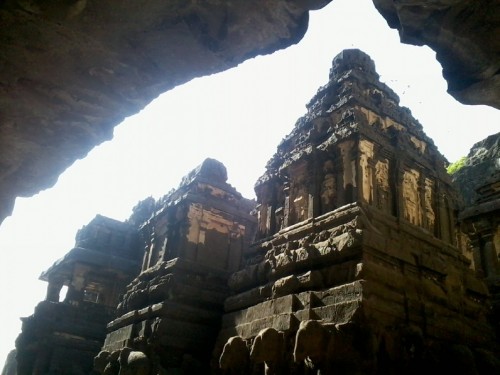- Explore
- Search
-
- Random
Advanced search
- Upload
-
Sign in
-
Create account
- About
- EN

Ellora is a UNESCO World Heritage Site located in the Aurangabad district of Maharashtra, India. It is one of the largest rock-cut monastery-temple cave complexes in the world, featuring Hindu, Buddhist and Jain monuments, and artwork, dating from the 600–1000 CE period. Cave 16, in particular, features the largest single monolithic rock excavation in the world, the Kailasha temple, a chariot shaped monument dedicated to Lord Shiva. The Kailasha temple excavation also features sculptures depicting the gods, goddesses and mythologies found in Vaishnavism, Shaktism as well as relief panels summarizing the two major Hindu Epics.
These caves are located on the southern side and were built either between 630–700 CE, or 600–730 CE. It was initially thought that the Buddhist caves were the earliest structures that were created between the fifth and eighth centuries, with caves 1–5 in the first phase (400–600) and 6–12 in the later phase (650–750), but modern scholarship now considers the construction of Hindu caves to have been before the Buddhist caves. The earliest Buddhist cave is Cave 6, then 5, 2, 3, 5 (right wing), 4, 7, 8, 10 and 9, with caves 11 and 12, also known as Do Thal and Tin Thal respectively, being the last.
To use all the features of this site you must be logged in. If you don't have an account you can sign up right now.